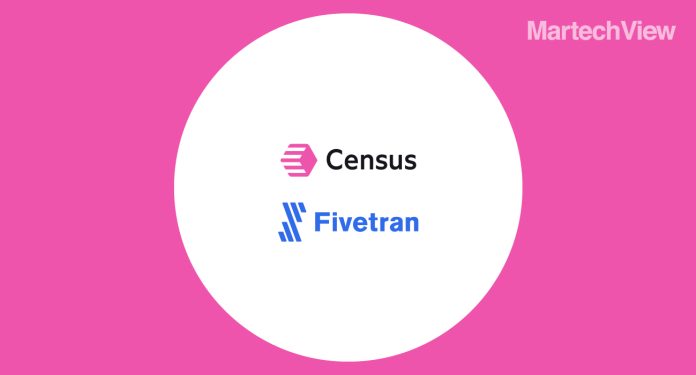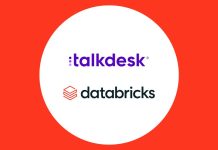Fivetran announces its acquisition of Census, a leader in Reverse ETL, to create a unified platform for data ingestion and activation, simplifying the journey from raw data to business impact.
Census has announced that it has signed an agreement to be acquired by Fivetran. This acquisition aims to create a complete data feedback loop, where Fivetran moves data into the warehouse, and Census moves trusted, modeled data out to various business functions. The two companies combine their operations to provide data teams with a unified and straightforward process from raw data to actionable insights. This development marks a significant new phase for both companies, their teams, and their customers.
The journey of Census began in 2018 with the ambitious goal of establishing a central source of truth to coordinate all business operations. The founders had observed the limitations of tools like Salesforce when dealing with large datasets, even before the rise of AI. Driven to improve the complex data integration landscape, the founder envisioned a central hub capable of distributing trusted data across the business. This vision involved three key steps: gathering raw data from all business areas, unifying it into well-governed data models, and deploying these models wherever needed.
Initially, while engaging with potential early users at companies like Figma, Atrium, and Notion, Census identified a specific problem: CRMs lacked actionable customer usage data for sales workflows. Simultaneously, cloud data warehouses were emerging as scalable and user-friendly data storage solutions. Recognizing this gap, Census focused on connecting data warehouses with SaaS applications, a crucial first step towards building the “brain” of a business. The prototype developed was so valuable that Figma, then a smaller company, immediately became their first customer. This innovative solution led early users to dub it “reverse Fivetran,” which became the origin of the term “Reverse ETL” in the industry.
Also Read: Visa Bets Big on AI Commerce, Unveils New Partnerships and Innovations
The connection between Census and Fivetran goes deeper than just a name. The founders of both companies met over 12 years ago. Census was among the earliest users of Fivetran. Furthermore, Fivetran has been a significant partner and a satisfied customer of Census from its inception, with their data team using Census in production alongside companies like Figma.
For Census, the greatest satisfaction comes from empowering users with tools that enhance their capabilities and contribute to their growth. Observing customers build successful businesses leveraging the operational advantages provided by Census has been a source of pride. The feedback and needs of these customers have been instrumental in shaping the product’s evolution.
Early customers, including Figma and Fivetran, along with others like Notion, Rippling, and Loom, were pioneers in modern GTM operations, now often referred to as “GTM Engineering.” Recognizing the limitations of spreadsheets and Salesforce, they sought the flexibility offered by SQL. This led to the development of features beyond simple table and column mapping, allowing users to write custom queries to drive specific operational workflows, such as creating “VIP customer lists for express support.”
The integration with Redshift marked Census’s first warehouse connection and became quite popular initially. However, the limitations of older database technologies, such as the risk of overload, prompted a re-evaluation of their architecture. The emergence of Snowflake, BigQuery, and Databricks, with their separation of compute and storage, proved to be a turning point. These platforms enabled Census and other workloads to run efficiently on centrally managed data without performance issues. The data warehouses that Fivetran populated became capable of supporting operational workloads, a pattern that Census actively supported.
Also Read: What If Your Favorite Recipe Could Shop for You?
This shift coincided with the rise of the “modern data stack,” a concept centered on treating data models as software assets with version control and software development practices. Census aligned with this approach early on, integrating with tools like dbt and GitHub, and incorporating monitoring capabilities. As the modern data stack gained widespread adoption, Census’s ability to connect cloud data warehouses to various applications positioned it as a central source of truth for critical customer metrics and insights. This led to a shift in marketing strategies, with teams moving away from traditional CDP solutions towards leveraging warehouse data for action. This approach, known as data activation, has become the standard for marketing organizations across numerous companies.
The current wave of AI is generating excitement across the business landscape, including at Census. Recognizing the foundational importance of data quality for AI initiatives, Census recently introduced features for handling duplicates through entity resolution and tools for enriching data from multiple sources. Responding to user needs in the context of AI, Census launched AI columns, designed to empower data and operations professionals to leverage LLMs with flexibility and control. This has contributed to the evolving role of growth operations professionals as “GTM Engineers,” highlighting the significant leverage AI provides.
In this rapidly changing environment, speed is paramount, whether in keeping data current, reacting to changes, engaging with customers, or running experiments. While speed is crucial, Census remains committed to maintaining trust and quality. The ongoing pursuit of performance improvements consistently points to the need for a closed data feedback loop with interconnected components.
The acquisition by Fivetran represents a significant step towards closing this loop. Customers of both companies have expressed a need for more connectors to support both data activation and the flow of data into and out of the warehouse. Together, Fivetran and Census aim to deliver an improved user experience encompassing aspects like authentication and debugging. This aligns with a previously articulated vision of a unified platform capable of ingesting, unifying, understanding, and activating data.
Also Read: “Your Brand Is What Barbara Says It Is”: Liz Carter on the Feedback-Fueled Future of Marketing
Integrating the entire data lifecycle enables the creation of richer and more accurate semantic models, which in turn can facilitate true AI-powered automation. The founders and team at Fivetran share a similar vision for the industry. Key values that underpin this combined effort include a commitment to high-quality integrations, universal connectivity for all applications (AI or SaaS), and a fundamental belief that data teams should drive growth.
The merger is anticipated to be finalized soon, and further details about the combined teams’ future plans will be shared. In the interim, users can expect continuity in their interactions, product releases, and the focus on making data useful. The ambition to transform data teams into the central nervous system of every enterprise remains, with an increasing emphasis on connecting more applications, a trend accelerated by AI.
What began as an ambitious concept is now materializing into a Universal Data Platform designed to unify and activate data cleanly and instantly. This platform will build upon robust ETL processes, utilize tools like Entity Resolution to establish a single source of truth, and synchronize enriched data across various systems. With integrated semantics and governance, AI agents will be able to understand and act on data effectively. This represents the infrastructure for scalable, data-driven decision-making.
For existing customers, current services will continue to function as usual. Census will operate as a standalone product and API, maintaining its existing SLAs and team. The roadmap for future development will expand, incorporating real-time syncs, enhanced governance, and a broader connector catalog, leveraging Fivetran’s scale. Notably, the demand for increased ingestion capabilities within Census is expected to be addressed significantly. Customers will also benefit from unified support across their entire data stack.
In appreciation of their users’ continued support, Census and Fivetran are offering a celebratory extended trial of their products for the month of May. Interested individuals are encouraged to contact their respective customer representatives.
Also Read: Why Marketers Need a Data Diet in the Age of AI Overload
As this chapter concludes, deep gratitude is extended to all who have supported Census from its inception. Early customers like Figma, Clearbit, Atrium, and Notion are acknowledged for their belief in the product’s early potential, helping to validate the concept of reverse ETL. The over 1000 companies now using the platform are also recognized for their role in its growth. Investors are thanked for their belief in the team, mission, and market. Partners are appreciated for demonstrating the amplified value achieved through well-integrated applications and data. Finally, the past and present team members are lauded for their talent, resilience, and dedication in building the company culture.
Looking ahead, while striving for continuous improvement, the team at Census expresses immense pride in their achievements, including their contribution to advancing the data and operations landscape. They are enthusiastic about the opportunities that lie ahead as part of the Fivetran family.










